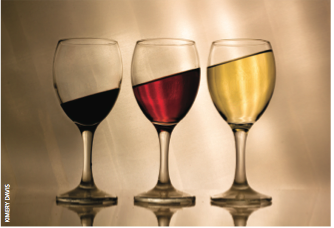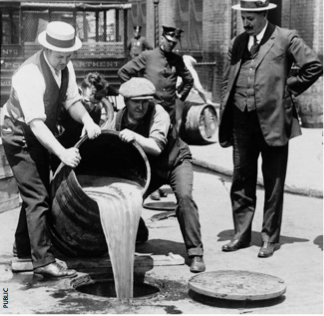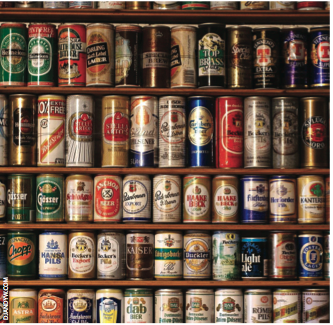MONDAY, 13 OCTOBER 2014
There’s a drug that causes over a million admissions to hospital in the UK every year, and two million visits to accident and emergency clinics. It’s linked to about half of all violent crime in the UK and it’s not just a UK problem– the world health organisation estimates that this drug is to blame for about 6 per cent of all deaths worldwide. This drug is legal in the majority of countries. This drug is alcohol.With such a track record, it might seem extraordinary that this drug is legal when others aren’t. Prohibition of alcohol was attempted in the USA for over a decade, but is widely regarded as unsuccessful. Statistics on the use of banned substances might generally be untrustworthy (after all, people are trying to hide the substances), but by following the levels of alcohol-related arrests, deaths, cirrhosis (liver damage) and alcoholic psychosis, we can determine the general trend. This suggests an initial collapse in drinking levels immediately after the introduction of Prohibition in 1920, followed by a fairly rapid return to about 60-70 per cent of the normal level, through a combination of black-market activity and exploitable loopholes. Not a complete failure on its own terms then, but hardly a success.
Ultimately any policy aimed at limiting the harm of alcohol needs to accept that people like drinking it. Firstly this raises questions over whether or not it’s right to penalise people for what many regard as an enjoyable, social activity. But for social scientists, it means that people will pay to drink, regardless of legality. Analysis of the figures from the Prohibition show that the fall in drinking was likely due to the cost rather than any social changes – the increased difficulty of hiding and smuggling alcohol meant that prices were as much as three times higher in 1930 than pre-Prohibition. In economics, some goods are considered ‘elastic’, meaning that when prices rise, people consume less of them. Alcohol is considered a very inelastic good, meaning that changes in price do surprisingly little to change the amount people consume. Such a low elasticity is also evidence that the other effects of Prohibition can’t have had much impact at all.
This inelasticity means that taxing alcohol doesn’t have as large an impact on consumption as might be thought, but it also means that such taxes will be good revenue earners. The price of a pint includes about a pound of taxes, half each from VAT and alcohol duty. The cost of whiskey and vodka are both about two thirds tax. And yet, in spite of raising revenues of over 9 billion per year on alcohol duty alone, there are still major questions over whether this is enough. It certainly covers the bills for the NHS, which estimates put at about 3 billion pounds, but for society as a whole there are much larger costs–adding in factors like alcohol-related crime, unemployment and lost productivity, government sources estimate costs of around 20 billion.
There’s a fundamental agreement that something must be done to prevent this, but a divide as to what, partially because so many of us enjoy drinking and don’t want too much interference in how we do it. Studies tend to show that government regulation of how alcohol is sold has little impact on its effects. For instance, changes in pub opening times changes when alcohol-related violence happens, but has little impact on the number of violent incidents. The number of places where people can buy alcohol appears to have some correlation with increased harm, but here correlation and causation are difficult to disentangle. The largest effect on reducing alcohol-related problems is seen following an increase in the price of alcohol.
There are two options for how to do this: a minimum price or higher taxes. NICE, the national advisory body for healthcare, advises a minimum price per unit alcohol. Any alcohol served in pubs, and most alcohol for home consumption, will cost more than this already, so the effect of this change will be concentrated on those after alcohol without frills: binge-drinkers and alcoholics. On the other hand, it will also be concentrated on the less well-off, who typically buy cheaper brands. NICE argue that the cost savings from lower rates of alcohol-related diseases and social problems would more than offset the reduction in government revenue.
The institute for fiscal studies (IFS) is not so sure, and worries that any difference between the sales price and the previous cost of alcohol goes straight into the pockets of the supermarkets or off-licences. This money might well be used to advertise the sale of more alcohol. Studies suggest these adverts are particularly effective at increasing drinking among the young, although banning adverts targeting the young does not necessarily help, since they still respond to non- targeted adverts. The IFS therefore suggest an increase in taxes.
Currently, alcohol duties are complicated, meaning that buying a unit of alcohol is much cheaper in cider than in beer or wine. All types of alcohol are historically cheap relative to earnings. The IFS suggest both raising and rationalising taxation, bringing alcohol costs into line with earnings. A constant tax per unit alcohol would discourage binge drinking and definitely raise money for the treasury. This tax rise would affect all drinkers, but assuming that supermarkets passed all the costs on, would raise the price of cheaper alcohol more. In spite of lower average alcohol consumption among the poor, this change would proportionally affect them more than the rich, however less so than minimum pricing. The low elasticity of alcohol means that although the amount of alcohol sold will decrease, government revenue will still increase from the tax alone, with savings on healthcare and crime offering a bonus. They predict that this ‘rational tax’ will result in similar increases in expenditure for the public as proposed minimum pricing, but the money goes to the government rather than retailers.
These strategies have both been tested. In most of Canada, regional authorities have a monopoly on the production of alcohol, meaning that they still end up with the increased income from minimum pricing. Data shows that a 10 per cent increase in the minimum price of alcohol resulted in only 3 per cent decrease in alcohol consumption, but a 9 per cent reduction in hospital admissions for alcohol-related problems. This data supports models developed by the University of Sheffield, suggesting that minimum pricing has a slightly more focused effect on reducing the crime and public health problems than increases in taxation.
But should we raise prices at all? Won’t people just turn to illegal sources, like during Prohibition? Certainly people will seek alternative options–either purchasing illegally or buying more alcohol from abroad–but history suggests consumption will still go down. Law-abiding, non-violent drunks can argue that their drinking pays more into society than their health problems take out. What is the payoff between their freedom and the risk of doing harm to those around them? Do we limit the freedom of supermarkets to sell alcohol at any price but give them more money to spend on advertising? Or should we let them tempt customers with below- cost price alcohol if they wish, but ensure they give the government enough money to deal with the consequences? Or a combination of the two? Grab a pint and join the discussion.
Robin Lamboll is a 2nd year PhD student in the Department of Physics.



